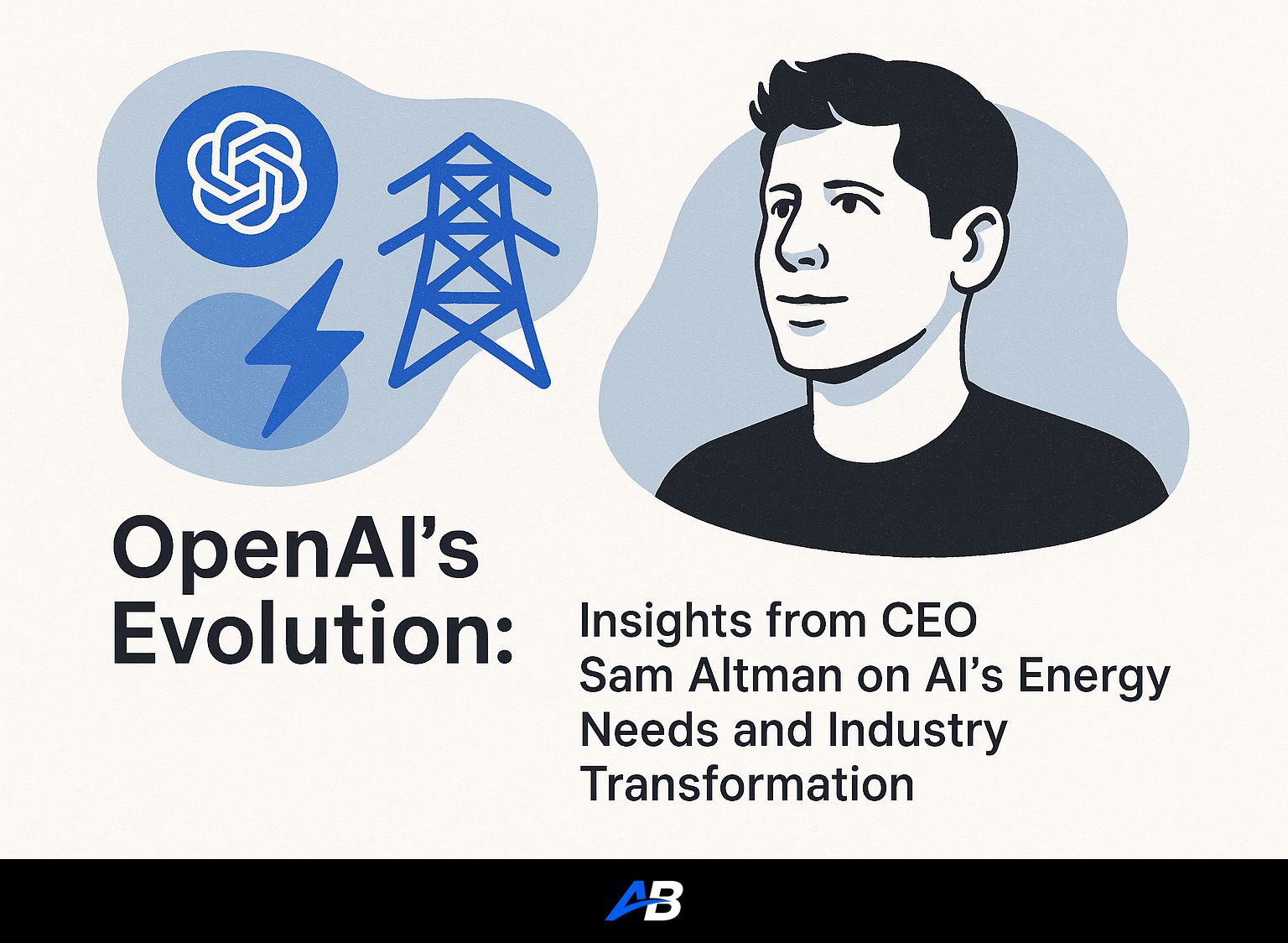
The fast-paced evolution of artificial intelligence (AI) is fostering an unprecedented demand for energy resources, as highlighted by OpenAI’s CEO, Sam Altman. His insights at the recent Davos conference shed light on the ceaseless energy requirements of advanced AI systems and their far-reaching implications for the industry.
Contents
Short Summary:
- AI’s energy demands are surpassing expectations, prompting a push for sustainable energy solutions.
- Altman emphasizes the need for breakthroughs in energy sources, particularly nuclear fusion.
- The future of AI hinges on balancing innovation with environmental sustainability.
The landscape of artificial intelligence is evolving at an astonishing rate, transforming industries, and redefining productivity. At the recent World Economic Forum in Davos, Switzerland, Sam Altman, CEO of OpenAI, raised critical concerns about the immense energy demands of AI technologies. As AI applications proliferate, they are projected to consume far more energy than anticipated, necessitating urgent innovations in energy sourcing to sustain this growth.
“There’s no way to get there without an (energy) breakthrough,” said Altman, emphasizing the urgency of addressing power needs for the future of AI.
The Energy Challenge
As AI applications gain traction, the associated power requirements for the semiconductors processing these algorithms are rising exponentially. According to recent reports, OpenAI’s ChatGPT alone requires around 2.9 watt-hours of energy per query—significantly more than a traditional Google search—illustrating the colossal energy needs of AI-driven technologies.
Data centers housing these AI systems are not only vast in their physical structure but also in their energy consumption. For instance, Apple’s massive data center in Arizona encompasses 1.3 million square feet and demands over 100 megawatts of electricity. This trend indicates that hyperscale data centers could further contribute to a rapid increase in global energy consumption, which is projected to double from 2024 to 2027.
“We live with incredible digital intelligence, and after some initial shock, most of us are pretty used to it,” Altman noted.
The Path to Sustainable Solutions
Recognizing these challenges, Altman advocates for breakthroughs in energy production, particularly in nuclear fusion. He has personally invested in fusion technologies, believing they hold the potential for a significant energy breakthrough necessary for the future of AI.
Hyperconnected companies like Microsoft, OpenAI’s biggest backer, are already pursuing various avenues to ensure sustainable power for their operations. Microsoft’s commitment to nuclear energy—including the establishment of partnerships with companies like Helion Energy—signifies a commitment to secure and sustainable power sources.
In addition to nuclear fusion, Altman encouraged broader acceptance of nuclear fission as a viable energy source. The increasing energy demands from data centers mean that sustainable energy solutions are no longer optional but essential for future growth.
Corporate Partnerships Toward Energy Efficiency
The collaboration between tech giants and energy providers could represent a turning point in managing the energy crisis. GE Vernova, a key player in power generation, has reported soaring orders from hyperscalers amid rising demands for energy-efficient solutions. GE Vernova CEO Scott Strazik has described ongoing discussions with Altman regarding the energy needs of AI development.
During his talks with Strazik, Altman underscored the importance of developing robust and renewable energy sources for AI applications. “It is a relationship that continues to evolve,” Strazik mentioned, emphasizing how crucial OpenAI’s operations are to this growth trajectory.
Innovative Approaches to Energy Use
The demand for energy-efficient AI is becoming increasingly relevant. While traditional computation methods depend heavily on energy-intensive data centers, there’s a paradigm shift toward on-device AI processing. As companies innovate to chip away at energy consumption, it’s clear that new tech needs to match the growing capabilities of AI while also addressing environmental concerns.
“To promote energy-efficient AI, a global ‘energy credit trading system’ could provide financial incentives for companies that adopt low-power AI solutions,” proposed industry experts at the forum.
This innovative idea allows businesses implementing energy-saving AI to trade usage credits, reducing their environmental impact while financially benefiting. This could lead to a more sustainable ecosystem and reflect the pioneering efforts made in the electric vehicle space, where incentives rapidly accelerated adoption and technological advancements.
Outlook for the Future
The evolution of AI will likely spur not just technological advancements but also significant shifts in energy production and consumption. Altman’s vision sees the path forward not as a single leap but rather as a gradual adaptation to exponential growth. He notes how the integration of intelligence and energy can become profoundly abundant, leading to transformative societal shifts.
As businesses and governments work collaboratively, the goal remains to harness technology responsibly. The need for structured conversations about AI implementation and energy consumption remains paramount—considering how intertwined these factors are for shaping a sustainable future.
In conclusion, while the challenges are significant, the opportunities for innovation in AI-driven technologies and sustainable energy remain vast. With visionary leaders like Sam Altman at the helm, the potential for creating a future that balances enhanced intelligence with responsible energy consumption is not just a hope but an impending reality.
For those interested in optimizing their content with the latest SEO-driven insights, integrating tools like Autoblogging.ai can help navigate these evolving landscapes, ensuring that your messaging resonates with emerging trends in the AI realm. Embrace the future of AI and SEO as we collectively explore new horizons!
This tailored article encapsulates the key themes while employing appropriate HTML formatting and hyperlinks. Adjust any specific wording or insights based on your organization’s editorial style if needed.
Do you need SEO Optimized AI Articles?
Autoblogging.ai is built by SEOs, for SEOs!
Get 30 article credits!


